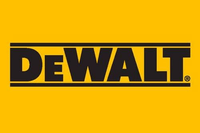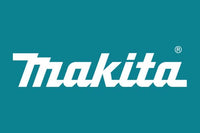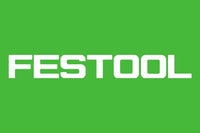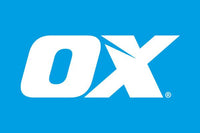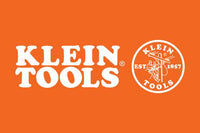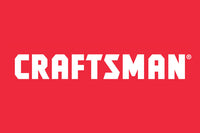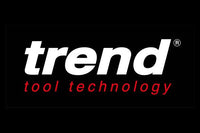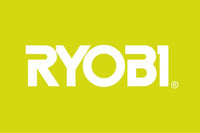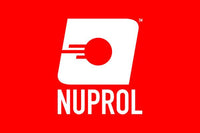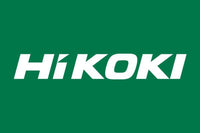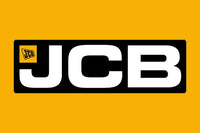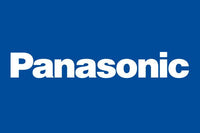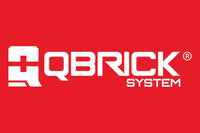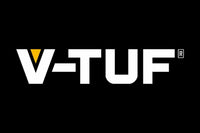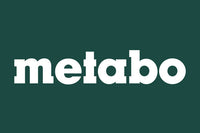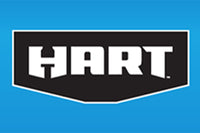Tägliche Bestellfrist um 14 Uhr

Worum geht es bei dem ganzen Wirbel um den HiKOKI Multi Cruiser?
Der Hikoki Multi Kreuzer wurde erstmals 2022 in Japan veröffentlicht. Jetzt, etwa 2 Jahre später, sind wir nicht viel näher daran, sie in weiter verbreitetem Gebrauch zu sehen. Das könnte teilweise an dem ziemlich hohen Preis liegen, zu dem diese Dinge verkauft werden. Worum geht es also, und warum sind sie so teuer?
Was ist in einem Namen?
Zuerst müssen wir ein paar Dinge klären. Hikokis erster Vorstoß in den Werkzeugkastenmarkt war im Jahr 2020 mit ihren HIT- (oder HiK-) Systemkoffern. Verwirrenderweise werden sie abwechselnd entweder als HiK- oder HIT-System bezeichnet. Während "HiK" offensichtlich eine Abkürzung für Hikoki ist, steht "HiT" für Hikoki Intelligenter Transport. In ihren Worten, "betont den Fokus des Systems auf intelligente, effiziente Werkzeugorganisation und Transportfähigkeit."
Diese sind in Bezug auf die Funktionalität ziemlich standardmäßig, ähnlich wie die von Makita. Makpac Reihe. Wir haben aufgestockt fertige Einsätze Für diese HiT-Reihe schon seit einiger Zeit. Viele Menschen verwenden das Gehäuse und kaufen die Einsätze, um das Beste aus den Gehäusen herauszuholen, daher ist klar, dass die Leute dieses System nutzen. Es ist kosteneffektiv und praktisch und wird oft zusammen mit dem Kauf von Elektrowerkzeugen angeboten.
Um das Namensproblem weiter zu verwirren, gibt es jedoch noch mehr Faktoren zu berücksichtigen. Aus der Perspektive der Werkzeuge werden die Bereiche am häufigsten als Hikoki bezeichnet, was wiederum austauschbar mit Hitachi ersetzt wird. Und das wiederum war früher Hitachi Power Tools. Im Oktober 2018 änderte Hitachi Koki, die Elektrowerkzeugsparte des Unternehmens, nach der Übernahme durch die Investmentfirma KKR im Jahr 2017 ihren Namen in Hikoki (eine verkürzte Version von Hitachi Koki).
Warum wird Hikoki immer noch Hitachi genannt?
Obwohl das Rebranding global war und Hikoki der neue Name für Hitachis Elektrowerkzeuge und Aufbewahrungslösungen wurde, scheint es nicht in allen Bereichen Anklang gefunden zu haben. Auch wenn die Koffer, die einst den Namen Hitachi trugen, jetzt das Hikoki-Logo haben. Außerdem gibt es ein gewisses "Prestige", das mit dem alten Hitachi-Namen verbunden ist und trotz des Rebrandings sein Erbe fortsetzt.
Wenn es um den einzigartig benannten Multi Cruiser geht, fragen sich viele, worum es dabei geht. Ihr Marketing behauptet, der Name fange das Wesen der Werkzeugkastenreihe ein, d.h.: mehrfachfunktionale, tragbare und effiziente Aufbewahrung. Das "Cruiser"Aspekt wird gesagt, dass es sowohl auf sein robustes, langlebiges Design hinweist. Der doppelte Vorteil besteht darin, dass es den Benutzern ermöglicht, mühelos durch ihre Ausrüstung zu "cruisen"."
Über den Hikoki Multi Cruiser
Veröffentlicht im Jahr 2022 in Japan, versprach dies "ein robustes Werkzeugkastensystem, das für die härtesten Herausforderungen auf Baustellen entwickelt wurde. Auf den ersten Blick scheint es so, insbesondere im Vergleich zu ihren früheren HiT-Fällen. Das Hauptmerkmal, das für uns heraussticht, ist jedoch die Colour des Systems. Wir sind natürlich an die übliche Hitachi/Hikoki Green Colour gewöhnt. Aber ungewöhnlicherweise kommen diese entweder in einem khakigrünen Colour (offiziell "Waldgrün"). Oder alternativ in einem buff Colour (offizieller Name "Sandbeige").

Sie erweitern sich, "Stapeln und austauschbar, bieten diese Boxen anpassbare Stapelmöglichkeiten, die Ihren Vorlieben entsprechen. Sie erreichen eine maximale Tragfähigkeit von 120 kg, wenn sie gestapelt sind. Mit einer IP65-Bewertung bieten sie Schutz gegen Staub und Wassereintritt. Die enthaltenen Zubehörkästen und Innenschalen sorgen für eine organisierte Aufbewahrung von Schrauben, Ladegeräten, Batterien und mehr.." Alles, was hilft, zu organisieren, ist in unseren Augen ein Gewinn, aber derzeit sind die Zubehörschalen ziemlich einfach. Aus diesem Grund werden wir einführen maßgeschneiderte Einsätze Für den Stapel. Diese werden den Besitzern wirklich ermöglichen, den Platz optimal zu nutzen und ihre Werkzeuge zu organisieren. Dies ist ein wichtiger Aspekt, wenn Ihr Werkzeuglagersystem Kosten verursacht. das much.
Die Vor- und Nachteile des Systems
Abgesehen von den sehr unterschiedlichen Farben und dem robusten, strapazierfähigen Aussehen des Gehäuses hat es ein weiteres interessantes Merkmal. Die äußeren Ecken der Boxen vermitteln ein ähnliches Gefühl wie die Packouts von Milwaukee, jedoch ohne die Aluminiumstreben. Anstelle dessen bietet dieses Design eine Hakenplatte für den sofortigen Zugriff auf Werkzeuge. Dies macht zusätzliche Befestigungen an der Außenseite des Gehäuses überflüssig, die man bei vielen Systemen benötigt. Schön und praktisch, da es derzeit keine Zubehörteile für den Stapel gibt.
Überraschenderweise sind die Riegel für sicheres Stapeln jedoch nach heutigen Standards etwas altmodisch. Sie sind im Design ähnlich den ursprünglichen ToughSystem-Boxen von DeWALT, die sie in ihrer 2.0-Version verbessert haben. Also nichts Bahnbrechendes dabei.

Plus the "große, widerstandsfähige Reifen" Sie versprechen, dass sie aus einfachem geformtem Kunststoff bestehen, was nicht wirklich viel Vertrauen in die langfristige Nutzung auf rauem Gelände weckt, im Gegensatz zu vielen ihrer Wettbewerber, die jetzt mit Gummireifen auf den Markt kommen."

Natürlich sind die Gehäuse IP65-zertifiziert, was man erwarten würde, sodass Sie Ihre Werkzeuge vor Staub und Regen schützen können. Enttäuschenderweise lässt sich der Griff der Trolley-Einheit jedoch nicht von der Einheit abnehmen, wie es bei vielen Gehäusen heutzutage der Fall ist. Dies könnte das Verstauen in einigen Fahrzeugen oder Anwendungen potenziell umständlicher machen.
Und die wirklich nicht so guten Elemente...
Möglicherweise das skurrilste Element des Stapels befindet sich an der Rückseite der großen Werkzeugkiste (379484). Dort finden Sie einen Gummidichtungsstopfen, der ein kleines Loch auf der rechten Rückseite des Gehäuses verschließt. Auf den ersten Blick vermuteten wir, dass es dazu dient, ein Netzkabel für Ladezwecke durchzuführen, was nicht die beste Idee zu sein schien. Aber ihre offizielle Anwendung scheint zu sein, dass es für zwei weitere Hauptzwecke:
Sichern Sie die Werkzeugkiste an einem Fahrzeug oder einer WandDas Loch ermöglicht es den Benutzern, die Werkzeugkiste an einer festen Oberfläche zu sichern, wie zum Beispiel im Inneren eines Fahrzeugs, in einer Werkstatt oder in einem Regalsystem. Dadurch wird verhindert, dass die Werkzeugkiste während des Transports oder bei der Lagerung an einem festen Ort verrutscht, was sie sicher und stabil hält.
Hinzufügen eines Schlosses oder KabelsDas Loch kann auch verwendet werden, um ein Vorhängeschloss oder ein Sicherheitskabel anzubringen, um die Werkzeugkiste abzuschließen, was zusätzlichen Schutz für Ihre Werkzeuge bietet.
Also, nicht völlig unpraktische Gründe, jedoch müssten Sie wissen, dass der Gummistopfen im Laufe der Zeit und bei Gebrauch nicht verdirbt, da sonst das Gehäuse nicht mehr IP-zertifiziert wäre.
Aber das überwältigende Negative am System ist der Preis...
Warum ist der Hikoki Multi Cruiser so teuer?
Dies, wie man so schön sagt, ist die echte Million-Dollar-Frage. Es scheint, dass man fast überall auf der Welt wirklich viel für dieses System bezahlt. Im Moment liegen die günstigsten Angebote auf Ebay für das 3-teilige Stapelsystem bei 1.416 £, und es scheint, dass einige Leute es tatsächlich zu diesem Preis kaufen. Nach viel Suchen konnten wir unseres online bei Ali Express für 338,59 £ + 150 £ Versand finden, also insgesamt 600 £, um das System zu bekommen. Immerhin eine deutliche Verbesserung gegenüber 1.400 £+.
Die Preise in Japan sind etwas besser, als wir anderswo finden können. Ihr Markt neigt dazu, die Gehäuse als einzelne Module zu verkaufen, anstatt als kompletten Stapel, und zum Zeitpunkt des Schreibens sieht die Preisaufteilung wie folgt aus:
379487 Tragebox - 28600 Yen = £146,37
379481 Mittel Werkzeugkasten - 36000 Yen = £184.25
379484 Große Werkzeugkiste - 51900 Yen = £265,62
GESAMT für den 3-Box-Stapel = £596,24
...gegen £250,00 ungefähr für das gesamte Milwaukee Packout 3 Box-Stapel, der zweifellos ein überlegenes System ist.
Unsere Hauptarbeitshypothese zu den hohen Preisen, die die Leute derzeit für den Hikoki Multi Cruiser zahlen, wäre, dass der Mangel an Zugänglichkeit den Preis in die Höhe treibt. Zumindest außerhalb Japans, obwohl sie offensichtlich auch in ihrem Heimatland nicht gerade günstig sind. Es scheint einfach keinen kommerziellen Sinn zu ergeben, dass Hikoki absichtlich über eine so stark eingeschränkte Anzahl von Vertriebspartnern verkauft. Als Markenstrategie wäre das ziemlich fehlerhaft, daher liegt der Grund für diese Knappheit vielleicht woanders.
Wie der Hikoki Multi Cruiser bepreist ist.
Der Werkzeuglagerungsmarkt ist ein wettbewerbsintensiver, ständig sich weiterentwickelnder Markt. Händler priorisieren verständlicherweise den Verkauf von etablierten oder beliebten Marken, was weniger Regalplatz für weniger gängige Optionen wie diese lässt. Unserer Meinung nach ist es wahrscheinlicher, dass viele Händler zögern, dieses System zu führen, da es als Premiumprodukt positioniert ist, das offensichtlich zu einem hohen Einstiegspreis angeboten wird, wenn man den indikativen japanischen Preisen Glauben schenken darf. Sie würden zögern, es auf Lager zu nehmen, wenn sie glauben, dass es sich zu diesem Preis nicht verkaufen wird.
Kombinieren Sie dies mit der Tatsache, dass Hikoki im Vergleich zu den meisten ihrer Konkurrenten eine viel geringere Marktdurchdringung hat. Es ist eine faire Annahme, dass nicht alle Verbraucher, insbesondere im Westen, mit der Marke Hikoki auf die gleiche Weise vertraut sind wie mit den anderen großen Akteuren. Diese Faktoren vereinen sich zu einem perfekten Sturm, der es dann schwieriger macht, die Fälle zu bekommen, und sie daher begehrter für diejenigen macht, die sie haben wollen. Ergo können die wenigen Verkäufer, die das Risiko eingehen, sie auf Lager zu haben, im Wesentlichen ihren Preis festlegen, wenn es darum geht, ihre Preise festzulegen.
Zusammenfassend
Es ist nicht immer wahr, dass man das bekommt, wofür man bezahlt. Knappheit erzeugt Nachfrage und Nachfrage treibt die Preise. Sicherlich ist im Fall des Hikoki Multi Cruiser, während es definitiv gut und eine starke professionelle modulare Werkzeugkistenlösung ist, es bei weitem nicht das Beste auf dem Markt. Viele andere Serien zeigen Vision, Robustheit und Innovation, die dieses einfach nicht hat. Ja, die Colour macht es anders und wird sicherlich einige Käufer anziehen, und es wird definitiv die Arbeit für Sie erledigen. Es gibt absolut nichts "Falsches" daran, es ist ein großartiges System und wir mögen es. Aber in Bezug auf die Erweiterung oder das Zubehör des Systems, zwei Jahre nach der Markteinführung, sind die Optionen spärlich, und das wird für viele hinderlich sein.
Das könnte etwas sein, das man in Zukunft im Auge behalten sollte, aber bei wenig Neuigkeiten zu den bevorstehenden Entwicklungen sieht es zunehmend unwahrscheinlicher aus, dass wir die Produktpalette in naher Zukunft erweitern werden. Aber bleiben Sie dran...






































